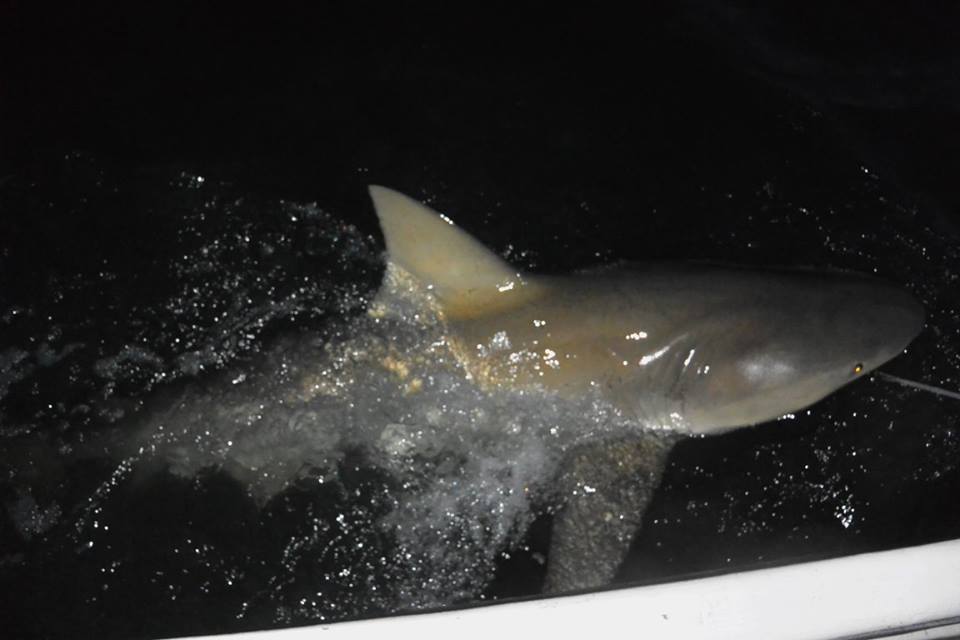Bull Shark Species Profile

Bull Shark – Carcharhinus leucas
Habitat – The Bull Shark is an apex predator of near shore and estuarine environments in warm-temperate and tropical waters worldwide. Bull Sharks are able to enter freshwater and have been found up to 1,700 miles up the Mississippi River, 2,400 miles up the Amazon River, and even living in a landlocked water hazard at an Australian golf course. Bull Sharks are summer visitors to Chesapeake Bay, occurring from late June through September. Within the Chesapeake Bay, Bull Sharks are most often encountered from the ocean to the mid-bay and within the Potomac River and Tangier Sound, but they have been found all the way up the estuary near the mouth of the Susquehanna River.
Size – The maximum confirmed length for this species is 13.2 feet, though most are 8.5 feet or less. Females grow larger than males. Bull Sharks are 2-3 feet in length at birth.
Ecology – The bite of a Bull Shark exerts more force than a similarly-sized White Shark, and this species feeds on other large marine animals like sharks (including cannibalism on other Bull Sharks), marine mammals such as seals and dolphins, sea turtles, and large fishes, occasionally taking prey nearly as large as themselves. Bull Sharks captured in the Chesapeake Bay have been documented feeding on a variety of marine and anadromous species including American Eel, Striped Bass, Summer Flounder, Cownose Ray, Weakfish, Red Drum, and Atlantic Croaker. These sharks may also prey on freshwater fish species. Bull Shark movements and migrations are not well understood, but they have been tracked making regular long-distance movements between reef sites, along shorelines, and into estuaries and rivers. However, pregnant female Bull Sharks may return to give birth in the same nursery habitat where they were born. Juvenile Bull Sharks grow up in estuaries and occupy brackish or low-salinity environments farther from the ocean than other shark species.
Research Significance – Despite their large size, preference for near shore habitats, and reputation as one of the most dangerous shark species, the movements of Bull Sharks have not been well-studied in U.S. waters. This is especially true for their movements within estuaries and into freshwater. As apex predators, Bull Sharks can influence the movement and habitat use behavior of their prey, which may have trickle-down effects throughout the food web. Some of the species Bull Sharks interact with in Chesapeake Bay are targets of economically-important commercial and recreational fisheries. Simultaneous tracking of Bull Sharks and their prey species may reveal whether their interactions influence which parts of the bay they inhabit.
More Information

